Topics
- Article
How Olympic Swimmer Kira Toussaint Uses WHOOP Data to Train for World Championships
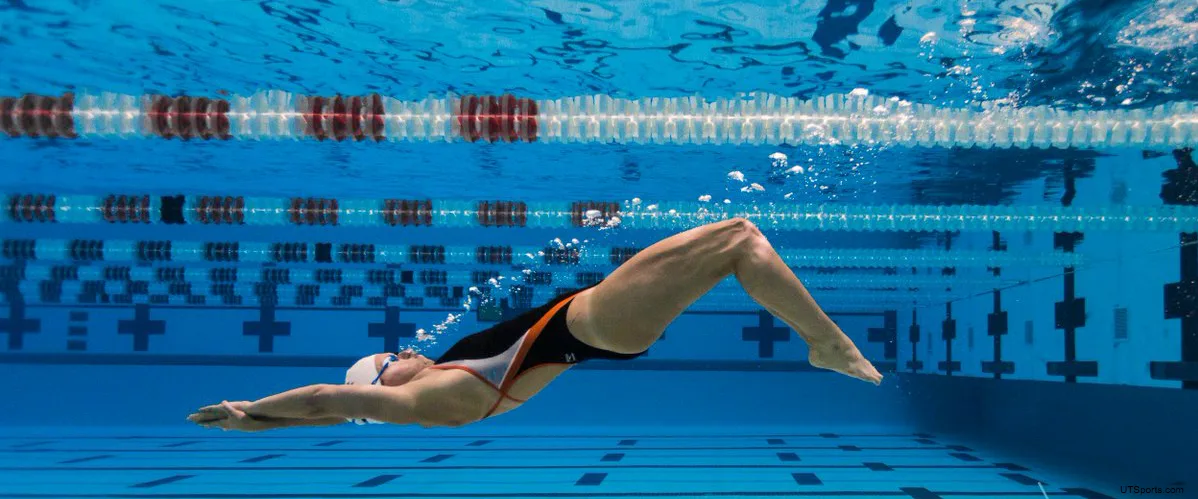
To say Kira Toussaint was born with a swimming background is an understatement. Her mother, Jolanda de Rover, won a gold medal for the Netherlands in the 200-meter backstroke in the 1984 Olympics in Los Angeles. Kira’s, father, Huub Toussaint, is a swimmer and wetsuit designer with a PHD in the mechanics and energetics of swimming. However, Kira insists it was her choice to follow in her mother’s footsteps.
“My sister Merel and I always tried a lot of different sports growing up,” she told WHOOP. “My mom didn’t want to force us into swimming. I wasn’t very good at any land sports though, and I really liked swimming, so I stuck with it.”
Kira had other goals in mind outside of the water as well. “When I graduated high school, I wanted to study physical therapy,” she said. “But I’d been training with our national team since I was 13 and it was really, really hard to combine studying and swimming. The Dutch swimming federation also didn’t really encourage me to pursue my studies. But I knew I wanted to, and my parents wanted me to as well, so I left the Netherlands and moved to the Unites States to go to college.”
A friend of Kira’s suggested she take a look at the University of Tennessee because of its athletic department’s “very scientific approach to things.”
“Ever since I was very young, the Dutch swim federation had been working with a Belgian professor name Jan Olbrecht,” Kira said. “On a recruiting trip to Tennessee, the coach there told me they worked with him too. ‘I was like oh wow, this is pretty cool.’ That, along with the way the team and coaches made me feel, I knew I could cancel all my other trips, I was going there.”
Olbrecht is world renowned for his use of lactate testing to improve athletic training, specifically for swimmers. It played a significant role in Kira getting her swimming career back on track during her junior year at Tennessee.
Lactate testing this morning with @kiratoussaint and @micahbohon in preparation for World Championships. #VFL #LVSD https://t.co/gTGCQPSH6H pic.twitter.com/BNdQihYCoo
— Lance Asti (@LanceAsti) April 26, 2017
It was also around that time that Kira was introduced to WHOOP.
“Our coach sent out an email asking us if we were interested in using WHOOP,” she said. “When I saw what it could do, I was like ‘Oh my god, that’s so cool,’ and I signed up right away. After I started using it, we quickly realized that I needed to recover more and I needed more rest. I decided on my own to sleep more, not go out as much, and not drink alcohol. I saw in my data that all that stuff was really affecting me. There were three months until NCAA championships and four months until Olympic trials, and I thought ‘this is what I need to do if I really want to be serious about this.’
Below are Kira’s Recoveries from December of 2015, her first month on the system:
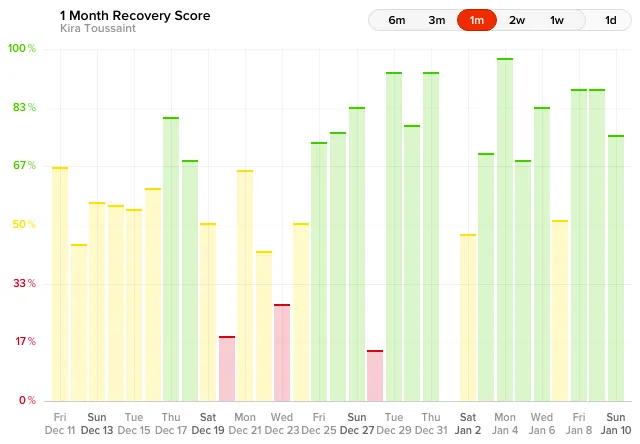
In addition to changing her behavior out of the pool, Kira and her coaches adjusted her training program. “I had red WHOOP Recoveries all the time,” she said. “My lactate test results were also going down significantly, which usually means that you’re training too hard and doing too much. Practices that the coaches thought were really easy were causing very high Strain values for me. I’d be like ‘Hey guys, that easy practice yesterday was a 17 Strain.’ My heart rate was escalating very quickly in comparison to the other swimmers.”
“We started having me swim more slowly than other people on the team, or I would take a morning off, that kind of thing. We modified my training a lot. I rested more and did less. I dropped so much time in those 3-4 months.”
As you can see below in the screenshot of Kira’s data from January and February of 2016, she adapted her Strain to what her body could handle. Her high and low Strain days (in blue) coincided with her high and low Recoveries (green and yellow):
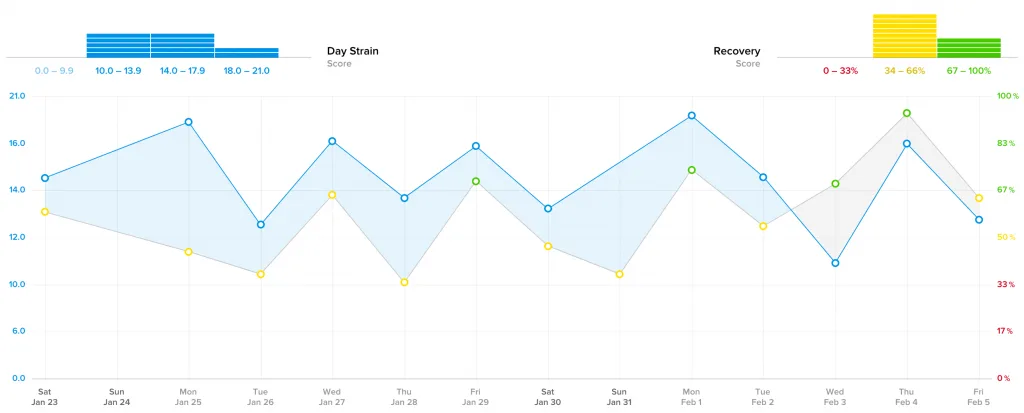
“In swimming, there’s a perception that you always need to work as hard as possible all the time,” Kira told us. “No pain no gain, rest is for the weak, that kind of stuff. But in training, that’s not really how it works. Rest is important, one of the most important things, actually. WHOOP helped me to realize that.”
The following April, five months after getting on the WHOOP platform, Kira qualified for the 2016 Rio Olympics in the 100-meter backstroke.
“In the Netherlands, you have be top two to make the Olympic team,” she explained. “You also have to make a certain time, we call it the cut. The cut is the 12th-best time in the world rankings from the year before. Those times are really fast. Before trials I knew I had to drop a lot of time. Nobody besides my coach and I thought I was going to make it. I’d been training in the U.S. for two-and-a-half years and I was kind of out of the picture back home. But I came home for trials and dropped all the time that I needed to.”
Kira hit the cut time exactly, swimming the 100 meters in 60.25 seconds.
This past spring, Kira qualified for the 2017 World Championships in the 50-meter backstroke.
“Since school got out in May, I don’t have as many red days any more,” she said. “I don’t have to go to class all day and swim, I don’t have to find the balance between training and my schoolwork. My resting heart rate has gone down and my HRV (heart rate variability) has gone up. I’ve had more rest and less stress.”
As a result, Kira increased her Strain levels as she focussed solely on preparing for the World Championships in Budapest (the blue bars represent Strain from workouts she logged):
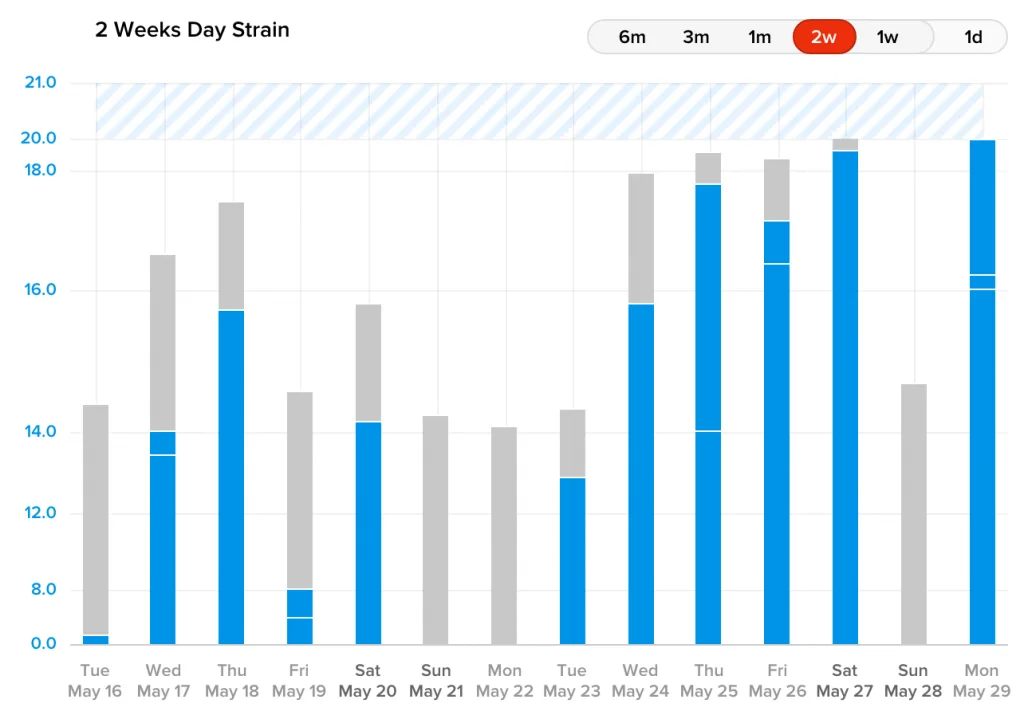
The clip below is from May 29th, when she registered a total Day Strain of 20.4:
Happy Monday!! What’s your workout for today? ???????? #roadtoBudapest #GBO #whoop #alwayson #TeamNL
A post shared by Kira Toussaint (@kiratoussaint) on May 29, 2017 at 8:53am PDT
When we last spoke to Kira in late June, she’d just traveled to Rome for a series of preparatory meets prior to the World Championships.
“The day before we traveled was a hard race day, so yesterday my Recovery was very low,” she said (28%). “But then I rested, took a nap during the flight and went to bed early, so my Recovery was high today. Last night when we arrived we went to the pool and did some mobility exercises on land. Then we went into water and swam 1k, which only takes 20-25 minutes just to loosen up–really easy and slow to prepare our bodies for today. This morning we had an easy aerobic practice, 3.2k to focus on technique. We’re about to do some light lifting in the weight room, 30-35 minutes. Just light maintenance since we’re in the racing phase of the season.”
Kira’s WHOOP data from that day tells the same story–a 94% Recovery and an 88% Sleep performance the night before. She also logged her workouts that morning and afternoon (where her heart rate spikes in blue):

In July, Kira and the Dutch national team have been training in Gyor, Hungary, about 75 miles from Budapest. Although they are training as a team, workout plans vary widely for each swimmer.
A post shared by Kira Toussaint (@kiratoussaint) on Jul 10, 2017 at 4:57am PDT
“We all do different sets,” Kira said. “Usually you do a set with one other person and you rarely swim alone, but our training is very individualized. For example, I’m a sprinter, I’m not as talented in my aerobic capacity. The coaches know that I can’t handle as much work as somebody with very high aerobic capacities.”
As Kira mentioned, her heart rate variability continues to trend in the right direction:
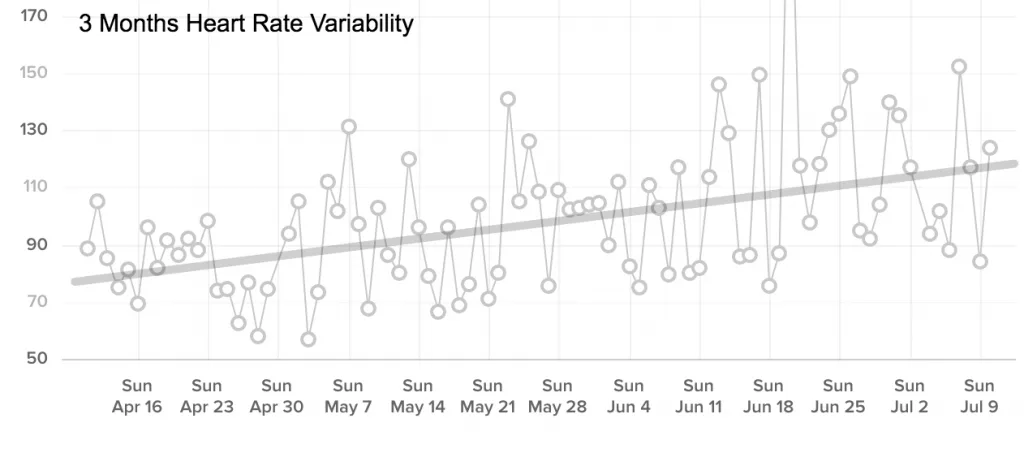
The dramatic increase in her average HRV over the past few months is a great sign that she’s doing everything right to peak at World Championships.
Kira’s first race in Budapest is July 24th. We wish her the best of luck, but if she keeps listening to what her data tells her, hopefully she won’t need it.
Make sure to check out @whoop on Instagram, Twitter and Facebook.